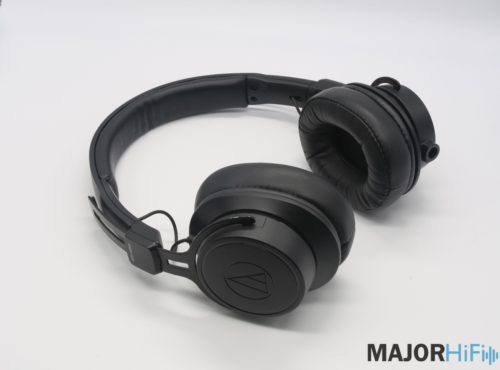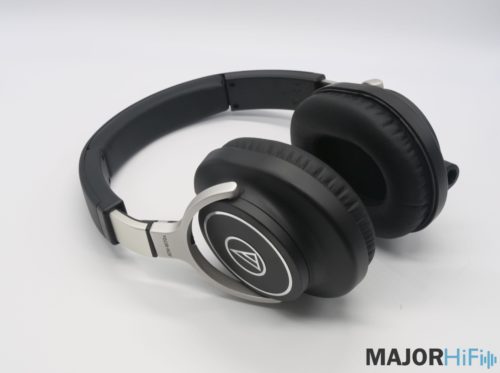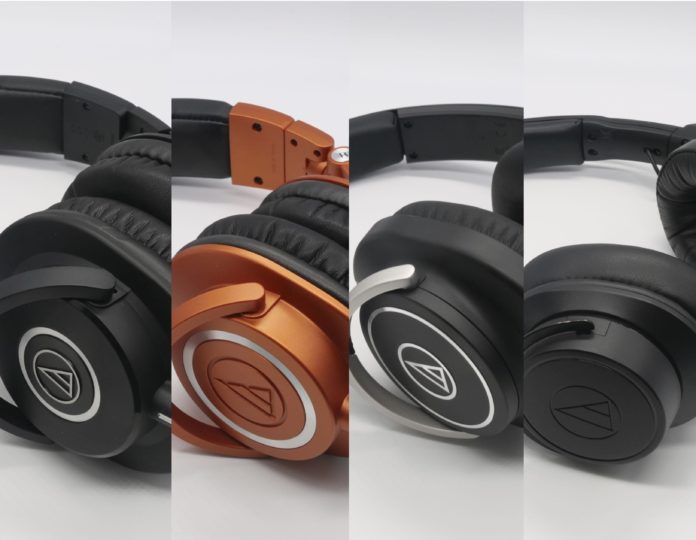I recently revisited Audio-Technica’s M50x after the release of their limited edition “Lantern Glow” color. Listening to this long time favorite yet again, I realized it had been a while since I’d used any of its many companion headphones. Today I’ll be comparing the M40x, M50x, M60x, and M70x. Excluding the more compact, on ear design of the M60x, these all have very similar builds, and go for a function over fashion look. They have a standard level of comfort and are all pretty resilient to wear and tear. What differentiates these most is undoubtably their sound. While they’re all marketed as studio headphones, this is often more so a suggested use than an exclusive term, so I’ll be analyzing their sound signatures along with deciding what applications I feel each is best-suited for.

ATH-M40x ($99)
The M40x has the most distinguished sound separation of the group, making them most optimal for music creation when it comes to pinpointing flaws in your mix and ensuring no sounds are clashing. They don’t have as deepened of a bass response as the M50x or M60x do, but still reach fairly far down. To me, their lack of a sub response put them at a disadvantage when mixing low end heavy mixes, as not all the nuances of the lowest frequencies were audible enough to fully gauge.
The M40x has a neutral, transparent high end and mid range, much more transparent than that of any of the other models we’re discussing. Their neutral highs once again make them more optimal for music creation, and less optimal for casual listening, as they will not clean up these frequencies or add excess air. However, their stellar sound separation keeps the highs on these from feeling thick or stuffy.

ATH-M50x ($149 – $169 for “Lantern Glow”)
While the M50x does have a width and separation similar to the M40x, it does not separate sound at quite the same level, making its sound a bit less prime for mixing analysis. It has a bright high end, but still is less bright than the M60x or M70x. The M50x’s mid range is quite recessed in certain pockets, making it very clean, but not always incredibly transparent.
What really separates the M50x from the rest of these models is its low end response, which is by far the strongest of the group. The M50x packs a lot of sub presence, and can fully portray the most intense rumbles. Some might find the increased low end of these makes them better fitted for casual listening than mixing, and this may be true. For my personal use, however, I found the M50x’s boosted low end similar to how most systems tune things these days do, thus providing a more applicable, all-encompassing presentation of my mixes’ lows. The M50x feels like the mid point between music creation and casual listening.

ATH-M60x ($199)
This M60x is an on-ear headphone, making it a different fit and somewhat different concept than the over-ear style of the M40x, M50x, and M70x. It has a similar sub presence to the M50x but not quite as intense, and holds some more of the top-end focused lows seen on the M40x. The M60x has the most dampened high end oof all these models, though they are by no means dark. They simply have a more rounded, colored high end than the rest.
In terms of width and separation, the M60x are on similar footing to the M40x and M50x, but keep things more coherent and less intensely separated, making them more optimal for casual listening than mixing or production in my experience. They do not seem to be trying to expose a composition’s potential engineering mistakes. Instead, the M60x adds a pleasant warmth, purity, and tightness to music.

ATH-M70x ($299)
the M70x hold the most width out of any of these, pulling back the center of the mix and prioritizing the sides. They hold a lot of depth too, creating a distinct sense of space. The M70x definitely felt the best fitted out of this group for casual listening. They have a low end level similar to the M40x, with perhaps a bit less of an aggressive attack. The M70x keeps the lows a bit more tamed and tightened, leaving a lot of room for the music to breathe.
The M70x’s most distinctive feature is its high end, which is the brightest and most intense of the group by a fair amount. It has a significant sheen that caries down into its high mids, making for a more metallic, highly detailed feel. Some may find this extended high end and high mid to be a bit overwhelming and lack warmth or balance, but others may feel it adds a new level of texture, definition, and flair to music.
Overall
While all of these headphones are directed at musicians and producers, I feel that the M40x and M50x are most fitting of this application. The M60x and M70x don’t feel transparent enough to qualify as a go-to reference or music creation headphone, and instead better suited for casual listening. And with their more colored, modulated sound, the M60x and M70x will serve its listeners quite well. If they were to be used for music creation, however, some time would need to be spent to learn their biases first. At the end of the day, all four of these headphones meet the current standards for their price ranges, and certainly don’t disappoint.
You can purchase the Audio Technica M40x, M50x, M60x, and M70x at Audio46
Compare the ranking of various headphones, earbuds and in-ear monitors using our tools.
Discuss this, and much more, over on our forum.
---MAJORHIFI may receive commissions from retail offers.














